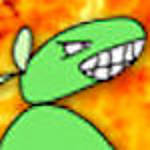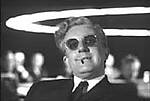Quoted Text
Quoted TextQuoted Text
the argument is furthered by saying that what is seen on modern military vehicles compared to German WWII paint is comparing apples and oranges. i am asked to accept that as fact on one had while on the other i know we have military technological marvels like the Leclerc, Leopard 2, Challenger II, and Abrams, but for the past 5 decades we can't make paint as durable as the Germans did over 60 years ago? again, that's a pretty bold claim.
In debating circles this is referred to as a "non sequitor"...meaning literally "it does not follow". Take, for example, the case of primitive cave/rock art around the world. There's a site close by to where I live called Hueco Tanks which had problems with graffiti over the past decades with ancient rock art side-by-side with it. The modern inks/paints used to create the graffiti have not stood up well against the tests of time over just the space of a few short decades having faded severely and, in some cases, been erased literally by time vs. art created with very primitive (by our standards) pigments and application methods that's hundreds if not thousands of years old. My point here is simple...modern paint, while certainly more advanced chemically, better for the environment, etc. is not the same as the paint used in World War 2. Comparing how vehicles painted with modern paints behave is indeed an "apples to oranges" exercise for many reasons.
There's a reason why lead-based paints were used...they were highly durable and tough, providing effective anti-corrosion protection for extremely expensive (relative to the time) armor plated vehicles (not to mention protecting the lives of the crews) and were maintained by their crews on a regular basis in the field directly as well as supported by field maintenance units. There's a reason why they were primered and basecoated at the factories (right up to the very end of the war), because this was a critical element in their manufacture process before acceptance as combat-ready vehicles by the Heer, SS, Luftwaffe, etc. The Germans didn't scrimp on this no matter the popular conception of the "end of the war chaos" theories that abound as justification for aesthetically pleasing approaches to weathering/finishing vehicles, especially late war vehicles (a perverse application of logic in its own right but I digress).
Did chipping occur on vehicles in WW2? Most certainly, but just as you mention with the modern crews (where there is a good analog to compare to), the crews were tasked with maintaining their vehicles and keeping them in good fighting condition at all times when not in direct combat. The anecdotal/memoir evidence supporting this abounds...AFVs had multi-man crews and those crews were responsible for the day-to-day maintenance and upkeep of their vehicles which would include keeping rust and paint damage at bay. Major damage from combat (your example of shell bursts, collisions, accidents with buildings, etc.) would be repaired, including repaint, as quickly as possible by the field maintenance units where needed to keep the vehicle in good fighting condition and where such damage would hinder the combat effectiveness of the vehicle in question.
These comments do not in any way discount the real-life experiences of those who've commented in this thread. Those experiences are valid in the context in which they happened, it's just not a guarantee that those same experiences also applied to a different context as those conditions, while potentially similar in many ways, have their own variables. Those variables include time in service, field maintenance practices, paint composition and methods of application, environmental conditions, etc. that are different.
Hi. I wasn't responding to one post in particular. The claims against chipping have repeated many of the same arguments throughout this thread. I get your point about the non sequitur, but the progression of my point was technologically based considering the vehicles I cited as complete entities. I was not separating them from their paint. A point about lead based paint I would like to make regarding durability is I remember back many years ago there were regular public service announcements over television and radio warning parents to beware of their children eating paint chips from lead based paint. It flaked off woodwork, iron and steel heat radiators, piping and the like. I've also dabbled in motorcycle restoration with my first Harley being a 1942 WLA which still had the original OD under the rattle-can applied color. It wasn't any more difficult to strip than the paint covering it. My second one was a 1937 74" sidevalve. Again, the paint wasn't any more difficult to remove than anything I did in later years. Both had pitting in areas you'd expect to see it. The most durable paint I ever had experience with was straight DuPont enamel with an extra dollop of hardener. That would have been circa 1980. But, I digress.
When one builds a model it is essentially a representation of that vehicle at a particular time in its life. So, a model can be anything from one of the unfortunates that went from factory to casualty in a few days, it can represent one fresh from battle, in battle, totally or partially destroyed, after the battle with all the attendant effects, crew & vehicle taking a break during a lull, any number of scenarios. Each of these will have a different approach to the finish and certain things like chipped paint may or may not be presented. I think it has been established that paint DID get chipped and scratched so representing it may be a trend, but a trend based on fact. The question about it seems to be a matter of the scale in which it is presented, both in size and quantity.
Last thing: I have an acquaintenance who worked his entire life with DuPont's automotive and industrial paint division. Previous to his retirement he specialized in troubleshooting paint application and finish problems. I believe i will ask him if he knows anything about this subject, or at least paint formulations from the WWII era. Meanwhile, can anybody offer any references pertaining to the subject of the paint used, manufacturer, chemical composition, application, etc.?
Ah, the WLA, a real Harley. I agree that the paint on the old military vehicles was no harder to remove than most modern paints. I did find when sand blasting that the primer was not as easy to remove as the OD. I left quite a bit on. Now, if you want cast iron paint, that marine grade green that some one soaked the jeep with at some point is the stuff you want. It might be that epoxy you refer too.
I think that the chipping effect came from a natural observation of real vehicles. Because the vehicles are small, the effect was over stated to get a desired visual effect. I have no problem with that, it is just as reasonable as washes and other techniques. To me, a chip here and there can look natural, a vehicle that looks like it was attacked by Molly Hatchet does not. If it makes the modeler happy, great. Nothing is more boring than everything looking the same.







































